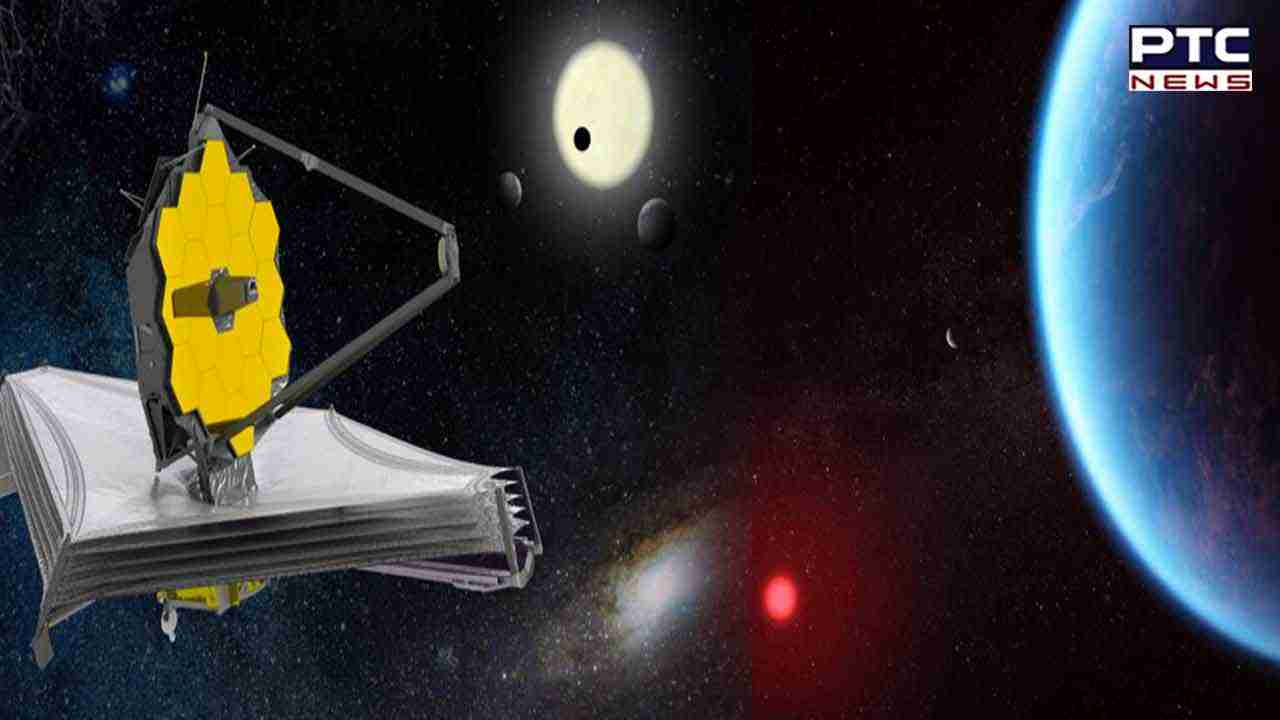

NASA uncovers tentative clues of life on distant planet
NASA: In a thrilling development in the field of astrobiology, the James Webb Space Telescope, a mission by NASA, may have unearthed preliminary evidence hinting at the presence of life on a distant exoplanet. The tantalising discovery centers around the detection of a molecule known as dimethyl sulphide (DMS), a substance exclusively associated with biological activity on Earth. However, scientists are quick to emphasise that the evidence remains inconclusive, warranting further data and analysis to confirm its presence.
Situated approximately 120 light years away from Earth, the celestial body in question is named K2-18b. Besides the potential trace of DMS, researchers have also identified the presence of methane and carbon dioxide within the planet's atmosphere. These findings raise the intriguing possibility that K2-18b may harbor a water ocean, a vital ingredient for the sustenance of life as we know it.

Professor Nikku Madhusudhan, leading the research from the University of Cambridge, expressed the shock and excitement felt by his team upon encountering these results. He explained, "On Earth, DMS is only produced by life. The bulk of it in Earth's atmosphere is emitted from phytoplankton in marine environments." However, Prof. Madhusudhan remains cautious about prematurely declaring the detection of DMS as conclusive, emphasizing the necessity for more data, which is expected to become available within a year. He stated, "If confirmed, it would be a huge deal, and I feel a responsibility to get this right if we are making such a big claim."
This groundbreaking discovery marks the first time that astronomers have uncovered the potential presence of DMS on a planet orbiting a distant star. Nonetheless, scientists approach the findings with a degree of skepticism, recalling a disputed claim made in 2020 regarding the detection of another molecule, phosphine, which could be produced by living organisms in the clouds of Venus.
Also Read: Google Antitrust Trial: $10 billion spent annually to uphold online search monopoly, according to US
Dr. Robert Massey, deputy director of the Royal Astronomical Society in London, who is independent of this research, conveyed his excitement about the findings, stating, "We are slowly moving towards the point where we will be able to answer that big question as to whether we are alone in the Universe or not." He expressed optimism that future evidence could provide a compelling explanation regarding the existence of extraterrestrial life.
The James Webb Space Telescope possesses the remarkable capability to analyze the light that passes through the distant planet's atmosphere. By dissecting this light into its constituent frequencies, akin to a prism forming a rainbow spectrum, researchers can deduce the chemical composition of the planet's atmosphere based on any missing parts of the resulting spectrum, which have been absorbed by atmospheric chemicals.
What amplifies the significance of this discovery is the vast distance that separates us from K2-18b, more than 1.1 million billion kilometers away. Consequently, the amount of light reaching the space telescope is exceedingly minuscule.
In addition to DMS, the spectral analysis has identified substantial amounts of methane and carbon dioxide within the planet's atmosphere, with a high degree of confidence. These findings suggest the presence of a water ocean beneath a hydrogen-rich atmosphere. Earlier observations by NASA's Hubble telescope had already detected water vapor around K2-18b, making it one of the initial candidates for investigation by the immensely powerful James Webb Space Telescope.
The prospect of an ocean beneath the planet's surface brings K2-18b closer to meeting the conditions necessary to support life, which include temperature, the presence of carbon, and, crucially, liquid water. Nevertheless, it's essential to remember that potential suitability for life doesn't guarantee its existence, further underlining the significance of the potential detection of DMS.
Adding to the intrigue, K2-18b is distinct from Earth-like rocky exoplanets often considered potential habitats for life. It boasts a size nearly nine times that of Earth. These planets, referred to as "sub-Neptunes" due to their size falling between that of Earth and Neptune, are enigmatic entities not found within our own solar system. Consequently, they remain inadequately understood, particularly concerning their atmospheres.
Dr. Subhajit Sarkar, a member of the research team from Cardiff University, highlighted this aspect, noting, "Although this kind of planet does not exist in our solar system, sub-Neptunes are the most common type of planet known so far in the galaxy." The team's exhaustive analysis has provided the most detailed spectrum of a habitable-zone sub-Neptune to date, enabling the identification of molecules present within its atmosphere.
In summary, while the discovery of dimethyl sulphide on K2-18b represents a tantalizing hint at the potential existence of extraterrestrial life, the scientific community remains vigilant, awaiting further data to confirm or refute this groundbreaking revelation. This development is yet another step toward answering the age-old question of whether we are truly alone in the vast expanse of the Universe.
Also Read: Mexico Congress reveals 1,000-year-old 'alien corpses'
- With inputs from agencies
